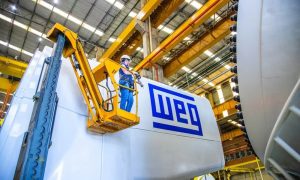Finding answers in IPD
Author, industry expert and construction business visonary, Ted Garrison, explores the benefits of integrated project delivery

There are many problems facing the construction industry. Is integrated project delivery (IPD) the answer? Well, it depends on whom you ask. Most of those against IPD, I’m afraid, don’t understand what it is all about. The American Institute of Architects says, “IPD leverages early contributions of knowledge and expertise through the utilization of new technology, allowing all team members to better realize their highest potentials while expanding the value they provide throughout the project life cycle.”
In essence, IPD makes the design and construction process more efficient by leveraging the design and construction team’s expertise to minimize waste in the system. In contrast, the typical construction project keeps the various disciplines in silos that prevent effective communication and coordination of the supply chain partners. Numerous studies from around the world have determined that this condition has been the primary reason the construction industry hasn’t improved its productivity in more than 50 years.
This inability to improve productivity has had a huge impact on the industry. Of course, there are those who disagree by pointing to the record volume of construction during the middle of the past decade. They argue that the recession has caused the construction industry’s problems and when the economy recovers, everything will be all right. Unfortunately that likely won’t be the case unless fundamental changes are made to the construction process.
The idea that the industry will recover without significant change ignores the factors that led to current problems. In the middle of the boom, construction costs rose to unsustainable levels, yet because of readily available funding and the economic euphoria, this critical fact was usually ignored. The housing market collapsed because the cost of housing became unaffordable. Families that could afford the median-priced house dropped to a record low of only 40 percent. The housing industry had been riding a bubble, and when it popped, it affected the entire economy.
The construction industry will not experience significant growth unless the overall GDP goes over 3 percent for a sustainable period, and that’s not likely to occur unless the housing industry recovers. The problem is the housing industry can’t build affordable housing using past practices. The inefficiencies within the housing industry are estimated at more than 30 percent, and some argue it’s much higher. The only solution is a collaborative effort that uses best-value and lean-construction practices. In other words, the housing industry needs to adapt an IPD approach in lieu of its past command and control approach. Only through collaboration with all the stakeholders can waste and costs be significantly reduced.
The weak housing industry is negatively affecting the overall economy, which has a negative impact on nonresidential construction. However, the industry needs to recognize that it had fundamental flaws before the economy collapsed. In 2005 the construction industry had an ROI of 9.7 percent compared to average of 16.9 percent for all U.S. industries.
In 2005 40 percent of contractors didn’t make a profit, and for decades construction has experienced one of the worst turnover rates. During the boom, despite relatively high wages, the industry had trouble attracting enough qualified workers and managers, which Peter Drucker said is the first sign of an industry in trouble.
Despite the low profit margins for contractors, clients still complained about high costs, cost overruns, schedule delays and poor quality. These problems increased project costs and often resulted in litigation. A new approach is needed because you can’t fix a problem the same way you created it.
Why IPD?
IPD is about increasing productivity, efficiency and performance.
This requires leadership, but not the old-school leadership that focuses on control, direction or influence. Instead, the leadership required by IPD is the ability to perceive the situation then allocate the resources in the most effective manner. This is the only way to increase productivity, efficiency and performance on a sustainable basis.
The IPD approach brings together the necessary experts at the beginning of the project. When this occurs, less information is required, fewer decisions are necessary and minimal control is required to create a highly efficient project. This may seem counterintuitive at first, but it works because the expert knows what to do.
Instead of creating detailed plans and specifications, the client needs to identify the desired outcomes or criteria and their priorities. When the Department of Energy built the National Renewable Energy Laboratory at Golden, Colorado, it established 27 criteria. There were no plans or specifications other than the criteria. In essence, they let the experts do their jobs. The result was a building that was in the 25th percentile in cost and still achieved the goal of being the most energy efficient building in North America.
The problem with most projects is the constant turf war. It becomes a battle of control over who will make the necessary decisions. However, when experts are used, they don’t need to make decisions because they know what to do. Since the expert knows what to do, less information needs to be exchanged. Further, experts know what they don’t know and seek out other experts to solve those problems.
The best way to minimize risk is to assign the task to the person best qualified to minimize that risk; that person is the expert. I’ve asked architects how often they prepare drawings no one needs. They laugh and respond more and more all the time. This is a result of a control environment that doesn’t work. If they don’t tell a bidder something, it exposes the client to a claim. The problem is this approach is inefficient and eliminates accountability from the contractor. However, when someone knows what they are doing, they don’t need someone to tell them how to do their job. This makes experts more efficient.
On the IPD project, the design-contractor team is responsible and accountable for the outcome. Since they are accountable for the results, they will not take on projects where they can’t perform. When there is an issue, the team will listen to the team’s expert on that issue because it’s in their best interest to do so.
On any project, IPD or other delivery method, the first requirement is to define the project in terms of outcomes. On the IPD project, the design-construction team then defines the scope—in essence, what they have included and what they have excluded. Once the team has stated they included something, it becomes their responsibility and they are 100 percent accountable for its performance, budget and schedule. There is no basis for a change order because they have guaranteed they can deliver what they promised.
In reality, the client has greater control of the project’s outcome by not exerting control over the process. The client defines what it wants, and before it commits to anything, the design-construction team explains what it will deliver in terms of time, cost and performance. In this situation, the client’s risk is limited to the items it does control, such as its definition, resulting in very minimal risk.
Of course, there have been IPD project disasters, but that is usually the result of clients hiring teams that aren’t familiar with the role of the IPD project team. This problem can be eliminated by selecting the right IPD team, but that’s a discussion for another day.
Ted Garrison is the author of Construction 3.0 Strategies and hosts a radio show via www.NCS30.com. He can be contacted via: Ted@TedGarrison.com
























